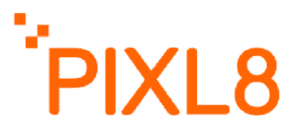Luke Holderness, Creative Director
Writers provide copy, designers ‘style it up’. Why not mix up these roles? Because the flexibility of digital breaks up barriers that many organisations still see as a given. To make the best of your marketing channels, it helps if every member of your production team is aware of a few factors that can exponentially increase the value and impact of your content.
Typography
Around 95% of information on the web is communicated via written language. This theory, by Oliver Reichenstein from iA, makes a strong point for the importance of typographic choices. Below are three simple tips on how to choose correctly.
- Pick a flexible font to create an effective typographic hierarchy. One or two fonts, providing a range of 8-10 styles is plenty to put emphasis where you need it, without cluttering your website with a multitude of typographic elements.
- Make your content easy on the eye. Never set your body font below 14px and avoid emphasising copy by using all caps. Both will increase the risk of your readers’ attention wandering off, with all caps copy being proven to slow down reading by 13-20%.
- Base your page structure on UX research. Capitalising on the finding that readers tend to follow an F-shaped pattern when scanning through a page, aligning headings and body copy to the left can benefit your users’ experience. Users have a low tolerance for wordy copy in a digital format, so keep paragraphs short and sweet.
Imagery
Words and images work in tandem to communicate your ideas to users. Once you have your typography sorted, you should be looking to optimise the visuals you’re using to support your digital content. Despite images typically being the designers’ domain, everyone can source and develop impactful digital imagery following the below tips.
- Audit internal image banks. You could have a goldmine of imagery sitting on your server, but you won’t know unless you take the time to audit it. Create a centralised collection of your branded imagery, and make the resulting repository accessible to everyone in your team. Once that image bank is created, it’ll be your go-to for on-brand visuals and will save you valuable time.
- Assess your imagery’s suitability for web. There are few aspects that determine whether an image is suitable for web or not. Always choose images with a sharp focus and hi-resolution. Your images shouldn’t make your sites look too busy and ideally feature some space around the subject matter. This helps to keep your website looking clean and professional.
- Cultivate a tagging culture. Organising your image files properly enables you to save resources going forward. Investing in your imagery is key to making sure it suits your needs. However, bear in mind that we are not necessarily talking about financial investment. Time and commitment can make all the difference.
There is a lot that everyone can contribute to creative challenges in digital – designer or not. Don’t just take the design of your website as a given – question it.
If you are looking for more input and practical tips on this topic, we suggest taking a look at Pixl8’s recent articles around implementing effective imagery and typography.
Pixl8 is the go-to agency for membership organisations who are seeking digital solutions that go the extra mile. They blend technology, know-how and creativity to develop digital products that are designed to grow and nurture your membership base.










Leave A Comment